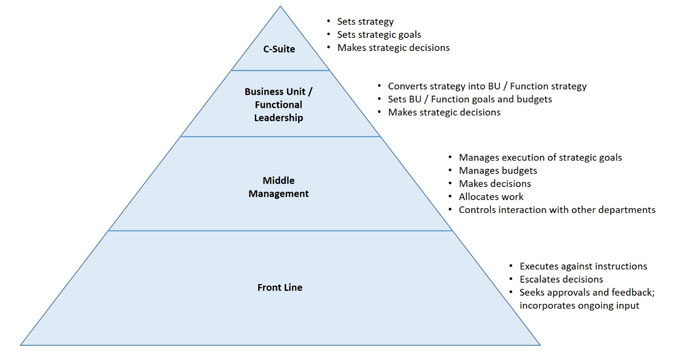The following is a guest piece by Jesse Newton.
Our organizations have become complicated messes. In a recent study 74% of respondents rated their organization as complex. Our highly complex organizations prohibit us from proactively focusing on the things that matter most and it has become too easy to get lost in day to day reactive fire-fighting.
Our days are often consumed by managing email overload, attending low value meetings, filling in templates and being sucked into crises across the business.
Organizational complexity often exists in the form of a complicated matrix structure with unclear roles and responsibilities, too many systems that are not integrated, and initiative overload that pulls people in various directions.
For organizations to realize their productive potential we need to drive out unnecessary complexity from our business, regain crystal clarity on strategic priorities and free people to focus their time and energy on the work that will deliver the greatest impact on performance. The time is right to simplify work.
4th Industrial Revolution without Productivity Gains
Today, we are on the front step of the fourth industrial revolution. We are living in a digital era where artificial intelligence, Big Data and the Internet of Things are revealing opportunities for us to finally step out of transactional, repeatable work and focus our time, energy and capabilities on the activities that deliver the greatest value. However, while we are in the midst of the fourth industrial revolution we have yet to realize the productivity improvements that previous revolutions delivered.

Why is it that this revolution isn’t delivering the performance and productivity improvement of previous revolutions? I believe a significant driver is the high degree of unnecessary complexity within our organizations that is holding us back. Fueling the propagating nature of complexity are the 20th century organization structures and management practices that many organizations are holding onto.
Holding onto 20th Century Structures
The current complexity crisis is largely due to many organizations holding on to outdated and obsolete methods of organizing how work gets done. These 20th-century approaches to organization structure and management are strangling our productive and innovative potential. They are limiting the thinking power of our people and not effectively using the resources at organizations’ disposal.

Figure 1. Typical 20th Century Structure
There are now new organization designs emerging that seek to liberate the creative and productive potential of our people through fostering rich autonomous collaboration. The models infuse the latest technology including artificial intelligence and IOT to strip out and automate repeatable processes and enable people to focus on the high value work; problem solving, decision making and design.
Stripping Out Bureaucratic Processes
Bureaucracy is often thought of as incomprehensible rules and time-wasting procedures. Given the attention that processes have received over the past century, it is no wonder that designing good processes has become a bit of an art form. Enter Six Sigma. There are actually belts in Six Sigma, like karate, given to those that achieve a certain level of process proficiency.
A couple of decades ago the school of Six Sigma was melded with another school called Lean. Lean is how organizations manage their businesses, with a strong cost-effectiveness orientation. It was a beautiful marriage between the process karate fighters and the cost-conscious bean counters.
Their love child was Lean Six Sigma, which delivered a capability that built beautiful detailed processes that were guided by cost-effectiveness. The focus of this capability was on processes in the heart of manufacturing, distribution, and core back-office areas like finance, HR, and procurement.
The issue today is that the process wizards have gone a little too far. Everything within a business has been defined, organized, and broken down into a process. We have become engendered with a process orientation. As part of the 20th century organizational model of control, clear processes with associated roles and responsibilities meant that work could be controlled from high above.
If people are forced to adhere to strict predefined processes their brains check out and they lose the desire and ability to innovate. Over time, we also stopped questioning these processes. The clunky, unwieldy, and energy- and time-consuming processes became part of an organizational makeup
The implication for business is that things move too slow, people think and act in silos, it’s hard to get anything done, decision making is poor, innovation is missing, risk-taking is low, and it all leads to increasing costs and being left behind by more nimble competitors. But it doesn’t have to be this way. Let’s take a clean sheet of paper and rethink how our organizations deliver value.
It’s Time to Simplify Work
In this digital age, when technology is fueling rapid changes in consumer preferences and reshaping industries, it is critical that companies innovate well and fast. Companies that are bogged down in slow decision making, risk intolerance, and siloed protectionism are destined to fail. It’s time to throw off the shackles of complexity and let simplicity be the guiding light to liberate peak performance in your organization.
Jesse Newton is the author of Simplify Work; Crushing Complexity to Liberate Innovation, Productivity and Engagement. He is the founder and CEO of Simplify Work; a global management consulting firm that helps organizations throw off the shackles of debilitating complexity and reignite top performance.

